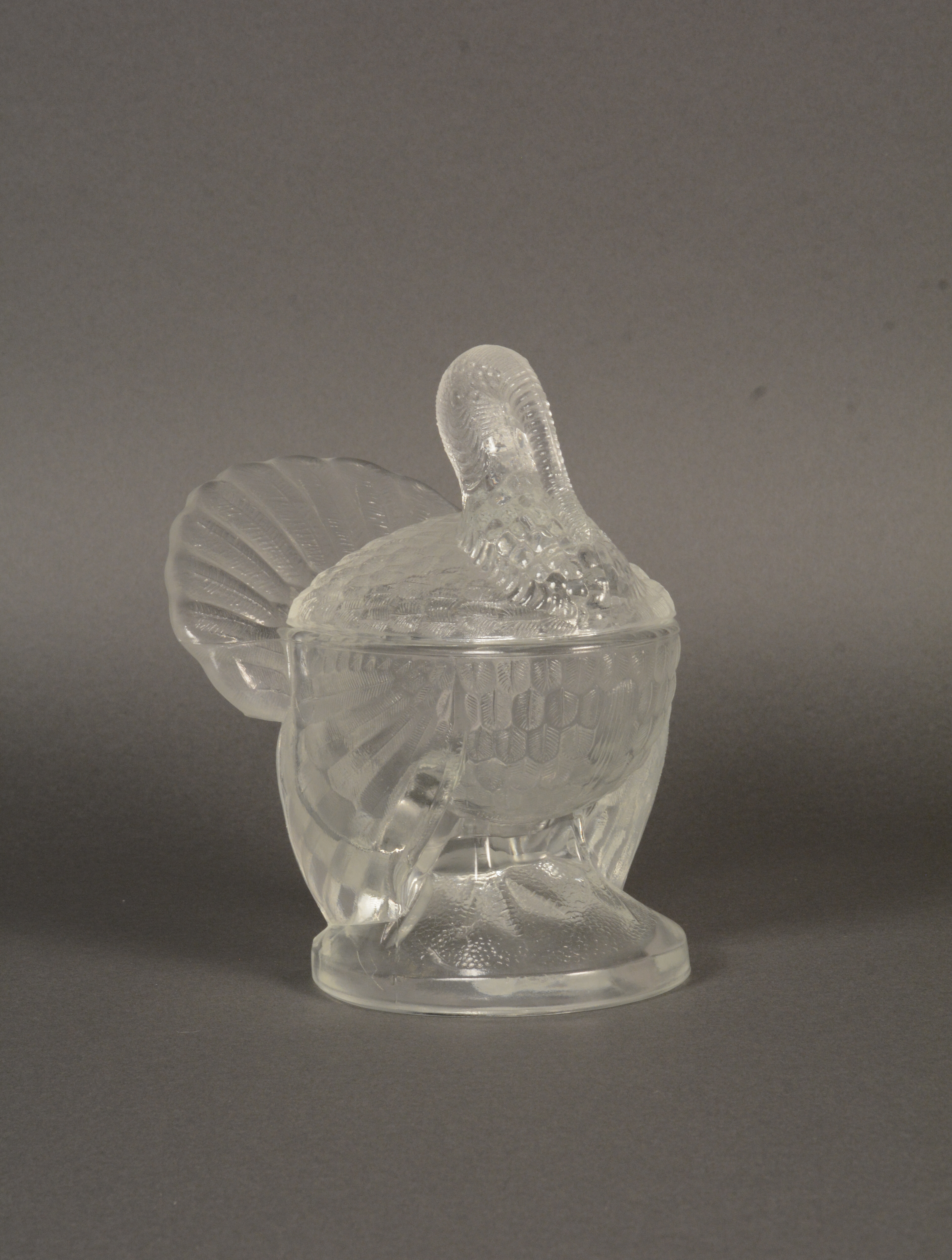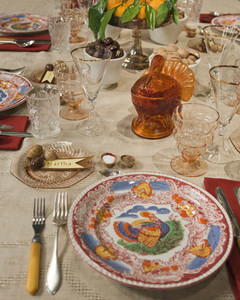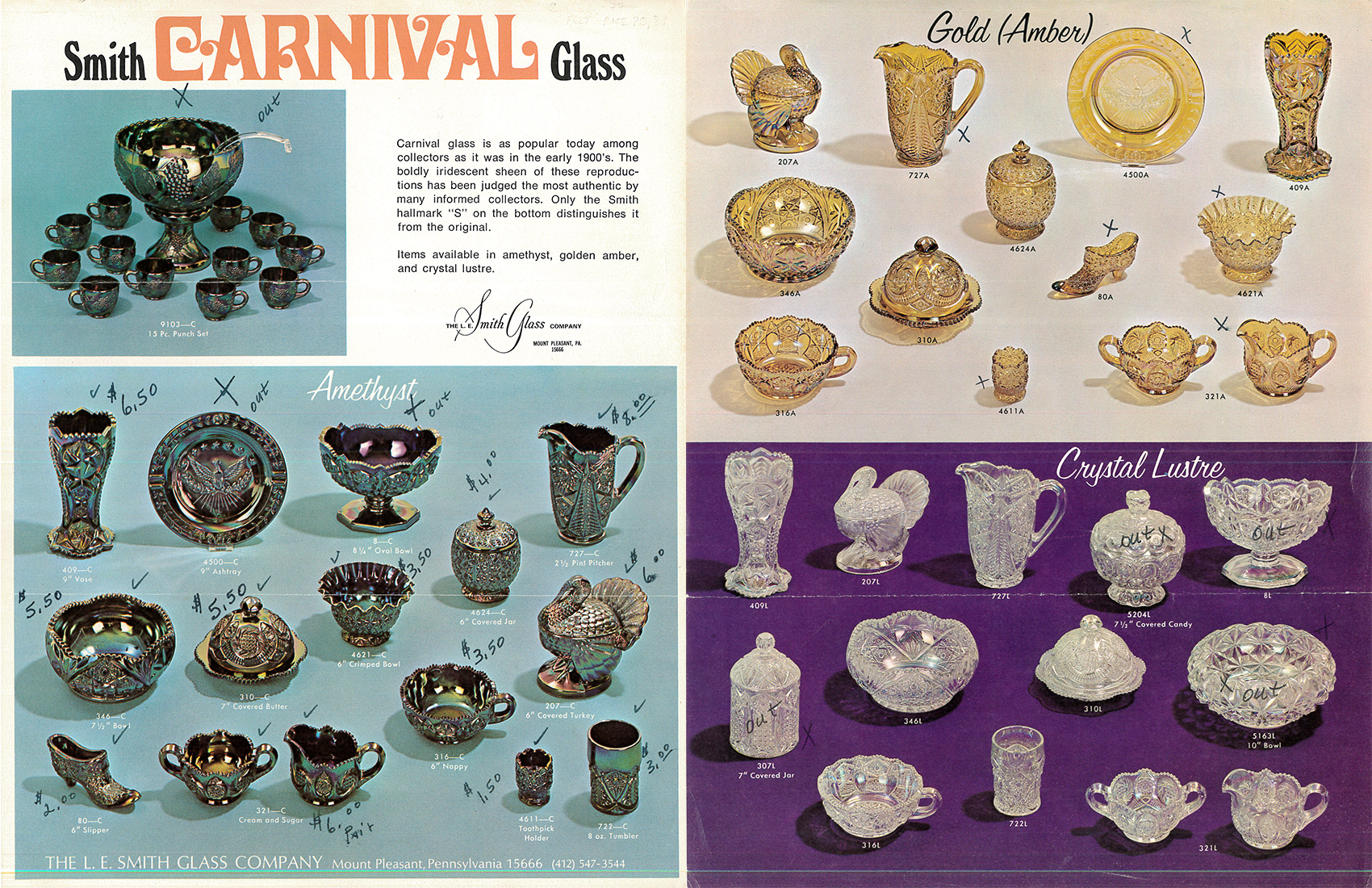
Thanksgiving Day is a time for celebrating with friends and family, but it’s also a national holiday where Americans can feast on delicious food. Stuffing, mashed potatoes, cranberry sauce, and the ever-present apple and pumpkin pies adorn tables across the nation. However, it is the quintessential turkey that is synonymous with the yearly meal, often residing at the center of dinner tables.
To commemorate the holiday, a Westmoreland County glassware company produced a serving bowl in the shape of the iconic fowl. On display in the Glass: Shattering Notions exhibit at the Heinz History Center is a colorless, seven-inch glass turkey that attracted the attention of an iconic American businesswoman.
In 1907, investors rented a Jeannette factory to use for glass production. The McKee-Jeannette Glass Company rebranded itself under manager Louis E. Smith and changed its name to the L.E. Smith Glass Company, and two years later, moved to a permanent location in Mount Pleasant.[1] For about 100 years, L.E. Smith produced glassware including punch bowls, platters, ladles, and vases that appealed to both local and national customers. While the intricate designs and colors for each piece were enticing, customers raved about a glass turkey released for the holidays.
In 1943, L.E. Smith produced the first glass turkey dish capable of holding soups as well as gravy – the perfect accompaniment for a Thanksgiving feast. Offered in a variety of colors, customers had the option to purchase a turkey “…in amber, ruby, clear and a new bicolor version called ‘amberina,’ with a ruby body and amber tail feathers…”[2] When the turkey entered production, it quickly became one of the company’s most popular items, and Americans soon found themselves in possession of the famous fowl. For more than 30 years, glass turkeys dominated the holiday market, until the company noticed a decrease in sales that prompted manufacturers to limit its production. Yet, after being featured on multiple lifestyle programs, coupled with an endorsement on a late-night talk show, the popularity of the glass turkeys grew exponentially.

Critically acclaimed businesswoman, television personality, and food aficionado Martha Stewart graced American broadcasting stations throughout the 1980s and ’90s. From home decor tips to comforting recipes, Stewart provided aspirational, yet accessible lifestyle guides for entertainment. During the holiday seasons, Stewart created specialized programs that featured unique foods as well as arts and crafts from businesses across the nation. In 1986, Boston-run WGBH Educational Foundation hosted “Holiday Entertaining with Martha Stewart,” where she prominently displayed several glass turkeys as a centerpiece on the table.[3] While this appearance boosted publicity for L.E. Smith, an interview on the “Late Show with David Letterman” transformed the glass turkey into a best-selling national product.
In an article by the Pittsburgh Tribune-Review, former plant manager Forrest Kastner explained the phenomenon, noting that production and sales exceeded expectations.
“’We went from selling 1,000 a year of that item to selling a couple hundred thousand a year,” said Forrest Kastner, 74, of Mt. Pleasant Township, the plant’s manager from 1978 until his retirement in 2000. “Martha Stewart was buying our products from us for four or five years before I retired.’”[4] As other glass factories capitalized on the popularity, L.E. Smith chose to brand their unique turkeys with an “S” on the bottom of each piece. While older models did not share this feature, modern renditions utilized the “S” to differentiate themselves from the competition.
Despite the renewed interest, as well as a national recognition for the piece in catalogs such as Williams Sonoma and Crate and Barrel, the L.E. Smith Glass Company officially ceased production on all items and closed its doors in 2005, though the factory operated briefly under new owner William Kelman. However, for those who wish to own a piece of Pittsburgh history and decorate their holiday tables in the style of Martha Stewart, the infamous glass turkey can still be found in antique shops and for sale online.
[1] Tom Felt, L.E. Smith Glass Company: The First One Hundred Years (Kentucky: Collector Books, 2007), 6.
[2] Patricia Lowry, “Born in W. Pa., glass gobblers hold tradition,” Pittsburgh Post-Gazette (Pittsburgh, PA) Nov. 8, 2007.
[3] APicozzi, Holiday Entertaining with Martha Stewart, Youtube video, 57:40, Oct. 14, 2016.
[4] A.J. Panian, “National magazine recognizes L.E. Smith Glass Co.,” Pittsburgh Tribune-Review (Pittsburgh, PA), Oct. 30, 2010.
Grant Stoner is a 2018 museum division intern at the Heinz History Center.
